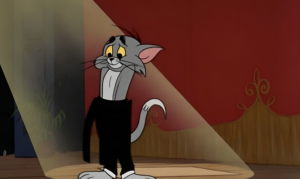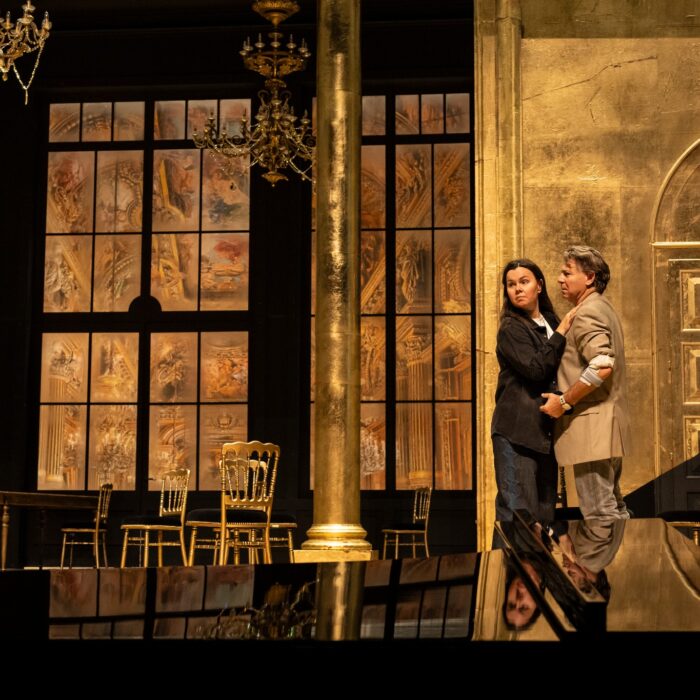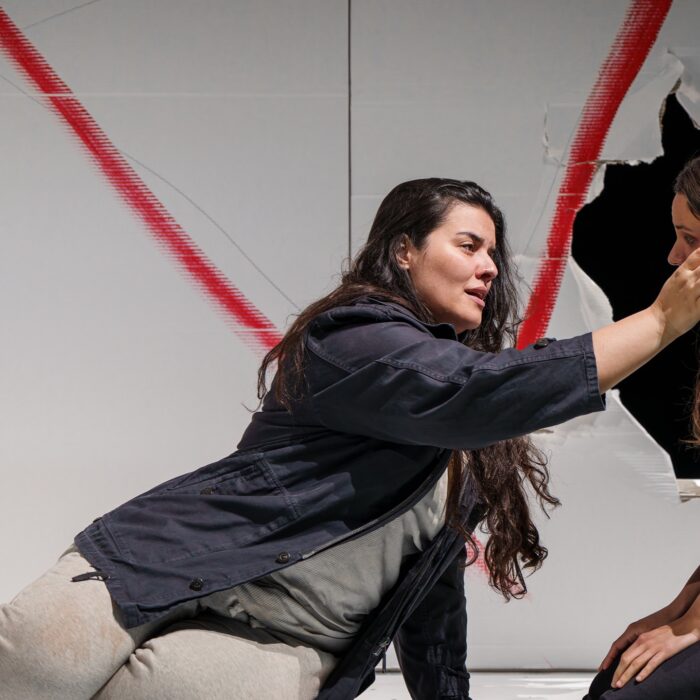
Opera Meets Film: Rossini’s Beloved Barber in Chuck Jones’ ‘The Cat Above and the Mouse Below’
By John VandevertAs the day opens up and the bustle of Seville begins to come to life, the barber makes his grand entrance with his mighty welcoming melody announcing his presence before his body can do the job. I’m talking about our beloved friend as depicted in Rossini’s acclaimed opera “Il Barbiere di Sivilgia” and his electric cavatina, “Largo al factotum.” But what if I told you its legacy extends well beyond the opera house and into popular culture?
In this month’s journey through the relationship of opera and film, we are looking at the comical short cartoon, “The Cat Above and the Mouse Below,” released in 1964 by MGM as part of the corpus of work produced by Chuck Jones during his time at the company. Mr. Jones was a huge name in the history of Tom and Jerry, participating with the cartoon from 1963 to 1967 when the cartoon took a bit of a hiatus from operations.
Buckle in and let’s take a journey through the story of Tom and Jerry, opera, and classical music combined into one!
Tom and Jerry Meets Opera
Throughout the lifespan of the Tom and Jerry cartoon, first aired in 1940 for Metro-Goldwyn-Mayer, many names from the classical music world have passed through halls and television screens. The work of the cartoon’s musical director Scott Bradley, a minor composer who drew influence from the Second Viennese School like Berg and Schoenberg but whose memory was hijacked by successor Carl W. Stalling, was both deep and wide in scope. In regards to classical music, composers like Franz Liszt, Frederich Chopin, Gioachino Rossini, and Richard Strauss II, Georges Bizet, and Ruggero Leoncavallo helped champion the cause of greater accessibility between the public and the classical world. A familiar face when it comes to opera and the cartoon is the episode, “Tom and Jerry in the Hollywood Bowl,” released in 1950 featuring the iconic shenanigans between Tom and Jerry during a concert of Strauss II’s comic opera “Die Fledermaus” in the Hollywood Bowl in Los Angeles.
Take, for example, Franz Liszt’s “Hungarian Rhapsody No.2,” the second in a 19-piece collection of highly ornate and very technically sophisticated pieces composed starting in 1846 after a particularly impactful visit to a gypsy camp. There, Liszt feasted upon the tunes of the Hungarian folk people, the “Hungarian minor scale” emanating from this, and soon became nostalgic for his Hungarian childhood, and ten years after his visit in 1839 the Rhapsodies were born. Finally, Liszt had returned to his roots and left the parochial world of the German conservatory behind. In Tom and Jerry, specifically the 1947 episode entitled, “The Cat Concerto,” Tom the cat is performing Liszt’s rhapsody while Jerry the mouse gets in the way in numerous different ways. One can’t forget too the episode, “The Flying Cat,” released in 1952 using the “Grande Valse Brillante” by Chopin, the first published waltz but not the first to be composed, as the soundtrack.
But what about operas like “Die Fledermaus” and “Carmen” I hear you asking? Tom and Jerry routinely features opera in its stories and narratives. One of the more popular cases is the episode, “Carmen Get It,” aired in 1962 about the pair getting into trouble at the Metropolitan Opera House. Of course, the opera house in the film is much larger, and far different, than the real one at the time but the humour of the short is easy to see as well as the funny usage of Escamillio’s well-known aria, “Votre toast” from Act 2 before his bullfight. As the conductor has Jerry run into his suit, the music begins to resemble swung-rhythm big band jazz, highly popular at the time but beginning to be touched by rock’n’roll, rather than the traditional sound of the familiar score. Another good example of opera’s influence in Tom and Jerry is Tom’s heartfelt rendition of “Vesti La Giubba” from the tragic opera “I Pagliacci.” It ends with Tom getting a bit choked up but many a good tenor have found themselves at a rather tight end of fate too.
Tom and Jerry’s Take On The Barber
In Rossini’s opera, “Figaro,” is first presented with the rhythmically fast, wildly entertaining cavatina known as “Largo al factotum,” the latter word from the Latin word meaning one who engages in many different types of work. The cultural journey Rossini’s barber has been on is exhausting and still ongoing. Speaking only about the aria, you can find it in many different places throughout popular media.
The 1944 animated film by Walter Lantz Productions used both the character and the aria in their film in connection with WWII and the many jobs of an army barber, while two years later Disney would use the aria in the final moments of their 1946 musical film centered around a pastiche of different clips and musical segments. The latter film also featured a sampling of other recognizable and underappreciated repertoire like Gaetano Donizetti’s “Lucia di Lammermoor” and Friederich von Flotow’s “Martha.” One later usage of the barber is seen in the 1991 film, “Oscar,” released by Touchstone Pictures with Rossini’s popular comic opera serving as the film’s musical inspiration for Elmer Bernstein, composer and creatively shaped by Aaron Copland and Israel Citkowitz.
The way in which the cartoon film uses and plays with the narrative and cavatina’s music is both farcical and endearing in equal measure. The main plot of the short cartoon is that while Tom is busy in the opera house singing and being adulated by the crowds, Jerry is doing his best to find joy in rest. But, as all things go, he’s thwarted in his attempt. So, as retribution, Jerry plans to subvert the performance and interrupt Tom’s singing. The two war against each other, albeit with one party unknowingly participating at first before an outright assault begins, with lemon juice, hammers, and even a rubber band around a mouth at one point being the tactics employed.
Acting as Tom’s voice was the American baritone Terence Monck (1936-2003), a Juilliard graduate and a former winner of the Los Angeles regional San Francisco Opera auditions in 1964. While there is little formal recording of his voice, he was among the soloists in the official recording of Italian composer Mario Castelnuovo-Tedesco’s op. 172 (The Song of Songs. A Rustic Wedding Idyll) which premiered in 1963 in Los Angeles. Nevertheless, Monck’s rich voice, methodical technique, and supple way about the melismatic motion contrasts the hectic scene on the screen. A point of humour comes when Jerry begins to sing, a transformed Monck into a higher octave, with the film ending with the downing of the curtain after all that had transpired.
I implore you to watch the film for yourself; the cat and mouse antics positioned throughout the film gives the cavatina a new life and sense of magic traditional implementations often fail to achieve. Another beloved usage of the barber’s theme song can be heard in Warner Brother’s 1948 cartoon “Back Alley Oproar,” featuring Sylvester the Skunk as the main singer, as well as the 1952 cartoon, “Magical Maestro,” released by MGM Cartoons featuring Butch Dog as the “Great Poochini.” This was so culturally important that it’s made its way into the Library of Congress where it sits today. Grab yourself some popcorn and take a seat as the episode isn’t something to miss.
Listen


